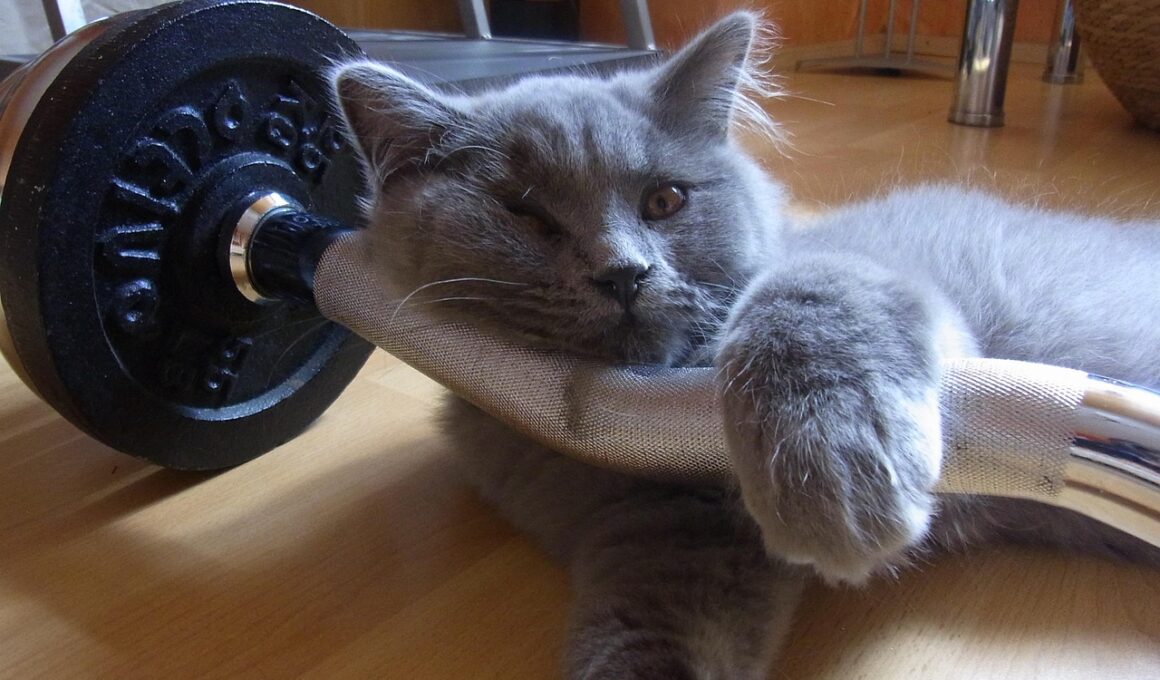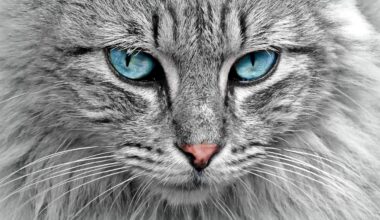Using Your Cat’s Vocalizations to Enhance Training Techniques
Understanding cat vocalizations is key to effective training, enhancing communication between you and your feline friend. Cats use vocal sounds, like meows and purrs, to convey messages and emotions, allowing you to interpret their needs better. Recognizing different vocalizations helps improve interactions, making training sessions more productive. For example, a high-pitched meow often indicates excitement while a low-pitched sound signals annoyance or discomfort. Each cat has unique tones, and observing them allows you to tailor your training techniques accordingly. Incorporating vocal cues, along with physical gestures, fosters a more holistic training approach. To understand your cat, pay close attention to its vocal patterns during various activities. This familiarity will help establish a bond based on trust and understanding, essential for effective training. Consistency in responding to vocalizations reinforces desired behaviors, facilitating communication. You can enrich your cat’s environment by rewarding vocalizations during training sessions, thus promoting further interaction. Engaging with your cat’s voice not only enhances training efficacy but also deepens your connection, paving the way for a harmonious coexistence.
Training your cat requires patience and understanding, and vocalization plays a crucial role in their learning process. Several studies show that cats learn to associate sounds with outcomes, leading to effective training strategies. For instance, they can learn that meowing prompts attention or a treat. A positive response to vocalizations encourages cats to repeat specific sounds, effectively communicating their desires. Employing positive reinforcement, such as treats or praise, after a desired sound can significantly boost learning. It’s important to be observant and respond consistently to different vocal tones and their contexts. The more you tune in to your cat’s vocalizations, the better equipped you will be to address their needs and preferences. Consider documenting their vocal patterns to track changes or desired outcomes, which can guide your training approach. This understanding helps to tailor the methods for various situations, ensuring a responsive and engaging training experience for both of you. Don’t forget that vocal interactions can make training enjoyable and less stressful for your cat, fostering a positive learning environment.
Exploring Different Cat Vocalizations
Cats utilize several vocalizations to express feelings, from playful excitement to anxiety. Understanding these sounds is essential for enhancing your training approaches. Common vocalizations include meowing, purring, hissing, and chirping, each carrying distinct meanings. A cat’s meow, for instance, can vary in pitch and volume, indicating different emotions, whether it be seeking food or attention. Purring often signifies comfort and satisfaction, making it an excellent time for training sessions. However, watch for hissing, which usually signals discomfort or threat, indicating that your cat may require a break or a change in tactics during training. Chirping or trilling is another interesting sound that usually expresses excitement or a desire to hunt. Recognizing and categorizing these vocalizations can create a more tailored training experience, allowing you to adjust your techniques based on your cat’s emotional state. Attuning to these sounds helps build a strong foundation of communication and trust. By responding to the specific vocalizations in a timely manner, you can motivate your pet and boost your training techniques.
Listening to your cat is vital for effective training. Each vocalization offers insights into what your cat might be experiencing, which can influence your training strategy. It’s essential to create a learning environment that respects your cat’s expressed feelings. For instance, if your cat frequently vocalizes during a specific activity, take note of its intention. If a cat seeks to engage, responding positively can strengthen your connection. Recognizing when to pause training and allow your cat some time to relax is equally important. It’s also good to remember that vocalizations can sometimes signify stress in an unfamiliar setting, indicating that adjustments to your approach are necessary. Regularly integrating vocal cues into training sessions can yield significant benefits. Positive associations encourage your cat to communicate more, increasing engagement and enhancing learning potential. Always remain patient and adaptable, responding empathetically to your cat’s needs and vocal expressions. Ultimately, the goal is to foster an understanding that promotes effective training and a joyful relationship between you and your beloved feline.
Combining Vocalizations with Training Commands
Integrating your cat’s vocalizations with traditional training commands can enhance the effectiveness of your sessions. Consistency in your responses will lead your cat to associate specific sounds with commands. For example, when teaching your cat to sit, use a specific vocal tone that indicates the action you’re requesting. When reinforced with a positive response, your feline companion will begin to connect the command with the desired behavior. Establishing clear vocal and physical cues makes training smoothly unfold across multiple sessions. During training, consistently use the same vocalization tone so that your cat can understand and recall commands effectively. Moreover, rewarding your cat immediately after the correct vocalization can solidify this understanding. Create a positive atmosphere during sessions by praising your cat and reinforcing good behaviors. Employing vocal cues promotes an overall enriching training experience, fostering deeper bonds between you and your feline companion. Each successful interaction enhances learning, while responsiveness encourages confidence in your cat. Engaging in this manner allows both owner and cat to enjoy the training journey, making it a rewarding endeavor for all involved.
Building a strong communication channel with your cat leads to more productive training experiences. Creating respectful interactions based on your cat’s vocalizations fosters a trusting bond and promotes learning. Regularly engaging with your cat through vocal cues and responding promptly encourages more vocalization overall. As a result, you will likely observe an increase in your cat’s vocal expressions during training sessions. Cats that feel understood often become more confident learners, translating into quicker adoption of training commands. Moreover, this mutual understanding fosters a joyful atmosphere during practices, making training less of a task and more of a shared experience. To further enhance this dynamic, feel free to maintain an inviting environment where your cat feels free to express itself. Consider varying tones or pitches in your responses to see how your cat reacts, as learning preferences differ among individual cats. Ultimately, this adaptability allows you to further refine your training approach. Engaging through vocalization makes the training experience more enjoyable and connects the emotional aspect of learning in a meaningful way.
Conclusion: Strengthening the Bond Through Vocalizations
Utilizing vocalizations as part of your training techniques can significantly enrich the relationship between you and your cat. Not only do these sounds provide insights into their emotional states, but they also enhance your communication with them. Observing and responding to vocal cues fosters a deeper understanding, promoting a sense of companionship. As your cat becomes accustomed to responding vocally, you will likely notice positive changes in their behavior and engagement. Every successful interaction helps to build trust, making your training sessions more enjoyable and less stressful. Remember that training is not just about commands; it’s about fostering a positive environment where your cat can thrive. Experimenting with different sounds and tones can lead to delightful discoveries about your cat’s personality and preferences. Staying observant and flexible will reward you with a more responsive cat, willing to learn. By investing in this understanding, both you and your cat will experience enhanced joy in your relationship. Through consistent positive reinforcement, you create a lasting impact on their training journey and emotional well-being.



